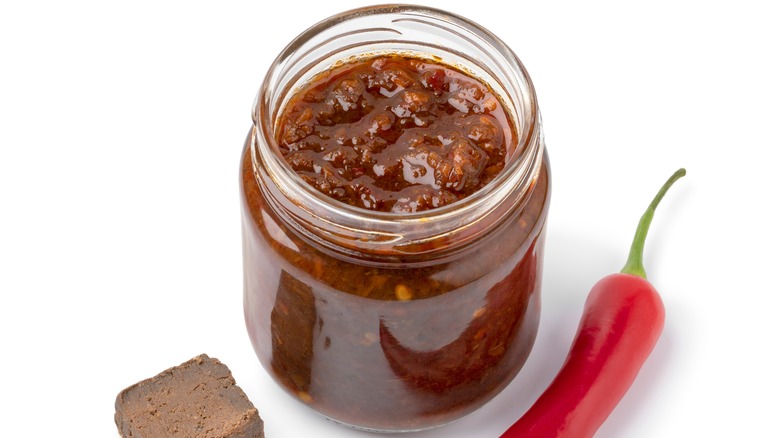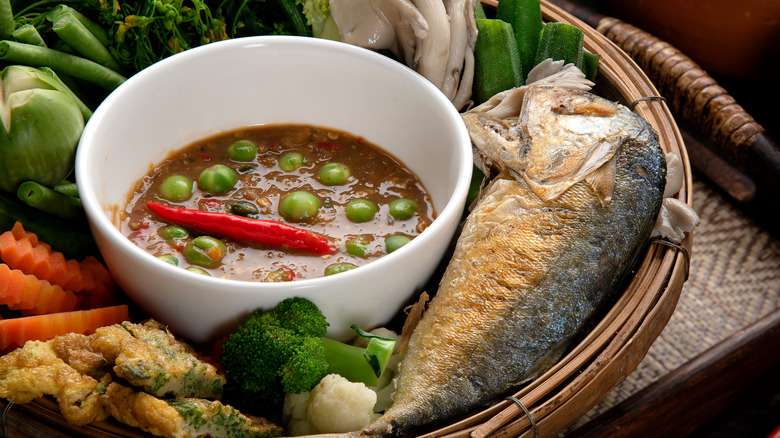The History Of Shrimp Paste Begins In The 8th Century
Fish and shellfish have been used as flavoring agents since ancient times. One of the most widely known is garum, or liquamen, which has influenced the development of many dishes. The Romans used this as an all-in-one condiment, salt substitute, and sauce composed of fermented and pulverized fish, usually anchovies, mackerel, or tuna (per Coquinaria). Today, there is a tendency to think of fish sauce in an exclusively Asian sense, which is not unfounded. There are numerous recipes across the cuisines of Vietnam, Thailand, Indonesia, Laos, and Cambodia that use some variation of salty fish sauce, per Legal Nomads. It is so connected to and prevalent in Asian cooking that you can easily find a jar of the stuff in the Asian aisle of most supermarkets.
Fish sauce, however, cannot be defined by a single recipe. Like Roman garum, most commercial fish sauces are a mix of fermented fish, and the fermentation process itself typically takes months, per Slate. However, there is another fermented fish product indicative of Southeast Asia that goes back centuries. While not in everyone's cooking arsenal, shrimp paste has been a consistent staple in the Southeast Asian diet.
An eighth century invention with many uses
Shrimp paste has roots in Thailand, per the Thai Food and Travel Blog. Fishermen would harvest shrimp, rinse them, and drain them before salting. Afterward, the drying process would begin, which could last days. Today, many of the same processes are practiced. Across the Southeast Asian world, shrimp paste is a vital part of cuisine and industrialized exports. As other nations adopted the practice, fish paste changed in color, consistency, and name. According to The Woks of Life, some of the different names for shrimp paste include the Cantonese "ham ha," Vietnamese "mắm tôm", Indonesian "terasi," or Filipino "bagoong."
In Thailand, shrimp paste is known as "kapi," and a little kapi goes a long way. It can be incorporated into curry, sauce, and sambal to create Thai curry paste. It also serves as a great base for fried rice and noodles. Like any fish sauce or paste, shrimp paste delivers a briny, somewhat fermented kick, adding richness and that oh-so-favorite culinary buzzword "umami" into a dish. Regardless of Western culinary trends, however, the people of Southeast Asia will continue to use shrimp paste as they have for hundreds of years: as a fundamental component of the way they cook.

